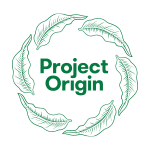Coffee Forecasting – Part One
Forecasting coffee green beans purchases can be tricky, like forecasting the weather; it takes a combination of maths and experience and even then you can still get it wrong.
At Project Origin, we buy containers of green coffee from all over the world, so getting our forecasts just right can be critical to both cash flow and profitability. So we’d like to share with you some of the things we do to get our forecasting right (mostly right at least!).
And especially with our Central America sourcing program about to begin in March, we’ll offer some advice on how to buy and secure blending coffees like our great regionals from Honduras and Nicaragua, as well as classics like our El Salvador Cruz Gorda, Supersonic, Villa Galicia and Los Pirineos coffees.
Where are you currently at?
It’s hard to tell where you’re going if you don’t know where you’re at. Understanding how many kilograms of coffee beans goes into each blend is critical to understanding how many kilograms you’ll need for the rest of the year. It’s also good to remember that coffees for single-origin runs can often be bought throughout the year, but blending components usually need much more planning and contracting to ensure profile consistency.
A simple example:
Milk base blend (some roasters will use a flavour profile to define the blend, some others might use specific origins/regions to define the blend component)
Usage: 3 bags of X and 1 bag of Z per week
Needs: 156 bags of X (3 x 52 weeks) and 52 bags of Z per year (1 x 52 weeks)
Where are you planning to go?
If your usage of green bean grew by 10% last year and assuming no big changes this year, you might forecast that your green bean use will increase by another 10% this year (maybe more). Keep in mind that 10% growth happens over the course of the year, so your actual increase in green bean might be more like 0.83% per month (10% / 12 months) or 0.19% per week (10% / 52 weeks). That’s not to say that you need to contract 100% of your yearly blending requirement, but we recommend around 60-80% to help hedge the risk of running out.
What happens if things go better than expected?
You managed to land that huge account and now you expect to grow by 50%. But wait … increasing sales by 50% also means needing 50% more green bean. At some times of the year, a sudden need for more volume can cause big problems. That’s why at Project Origin, we build relationships with roasters, helping you plan ahead and make sure you don’t get caught out.
What happens if things go worse than expected?
For every roaster who lands a huge account, there’s usually a roaster who just lost that huge account. How fresh is your coffee if you suddenly need it to last a lot longer? Is it clogging up your limited warehouse space? We’ll work with you to manage these problems, particularly by securing 6 – 12 month contracts so that you’re always getting fresh coffee spread out over the life of the contract. That way you’ve got time to bring on new accounts before the next batch of coffee lands.
Next steps
We’ll run through some more things to think about in our next few articles, including:
Have more questions about forecasting and planning ahead? Get in touch and we’ll do everything we can to help.
Stay up to date with our Project Origin projects and latest specialty green bean coffee imports
We acknowledge the Traditional Owners of the land on which we work, the Ngunnawal people. We pay our respects to elders past, present and emerging.
